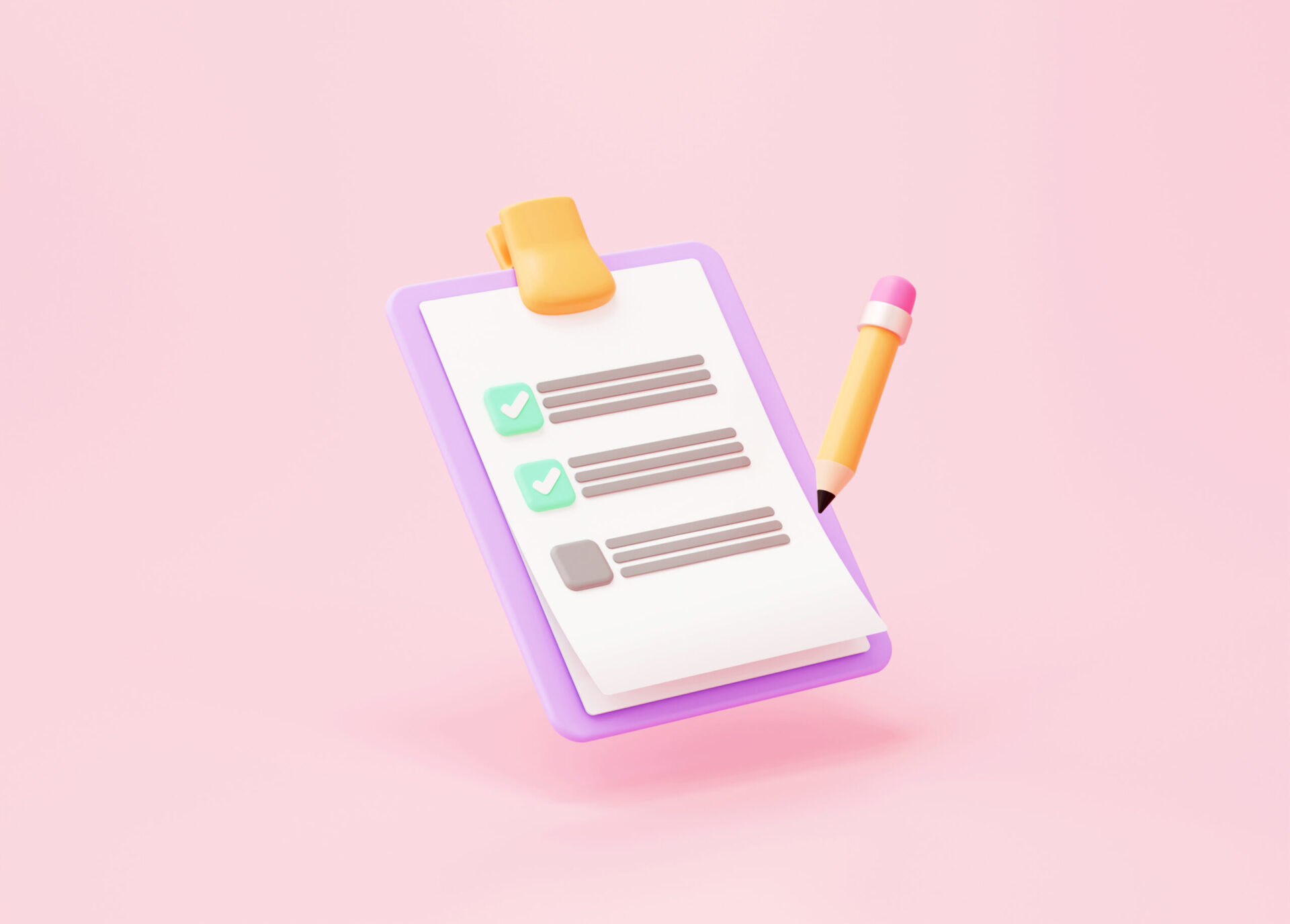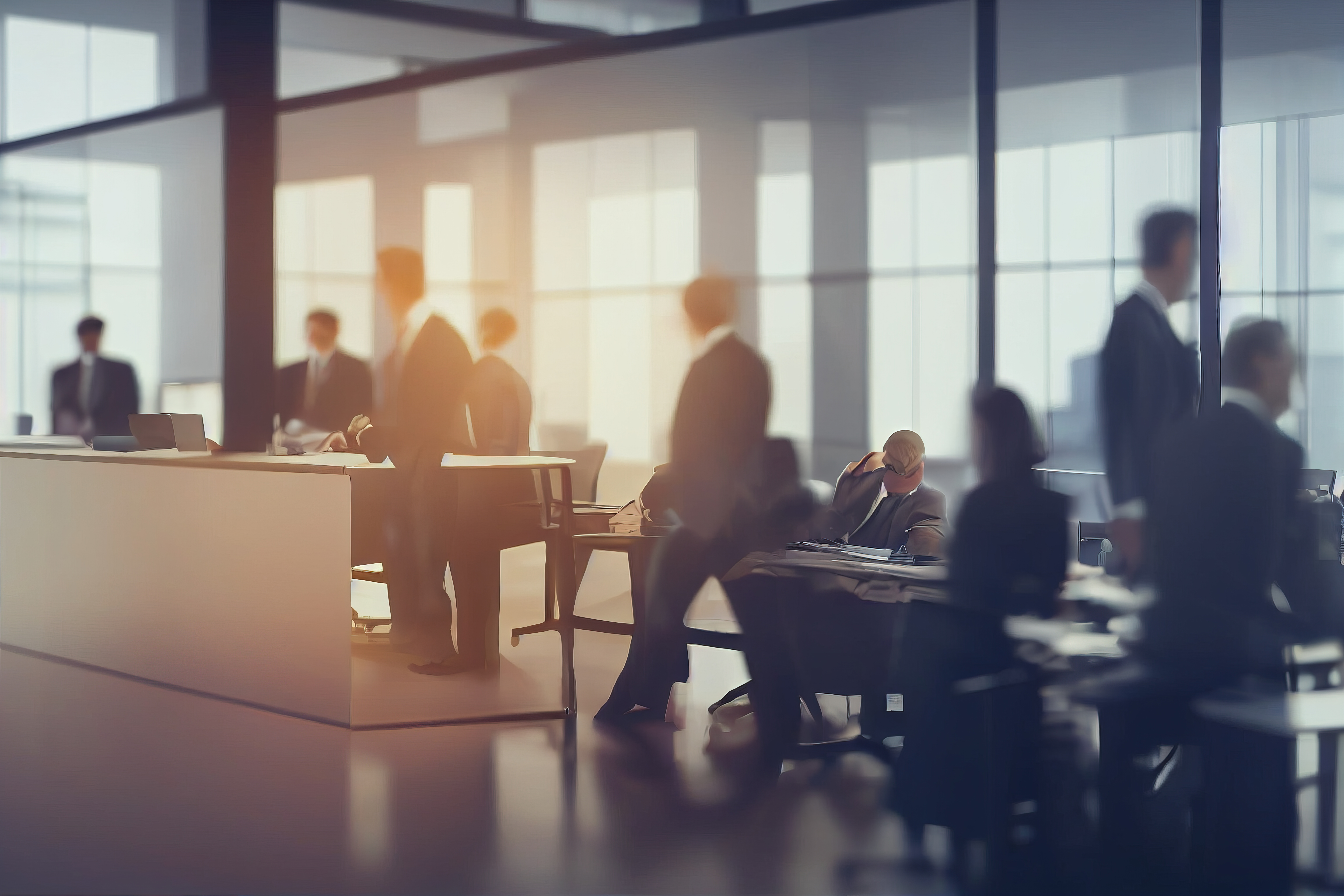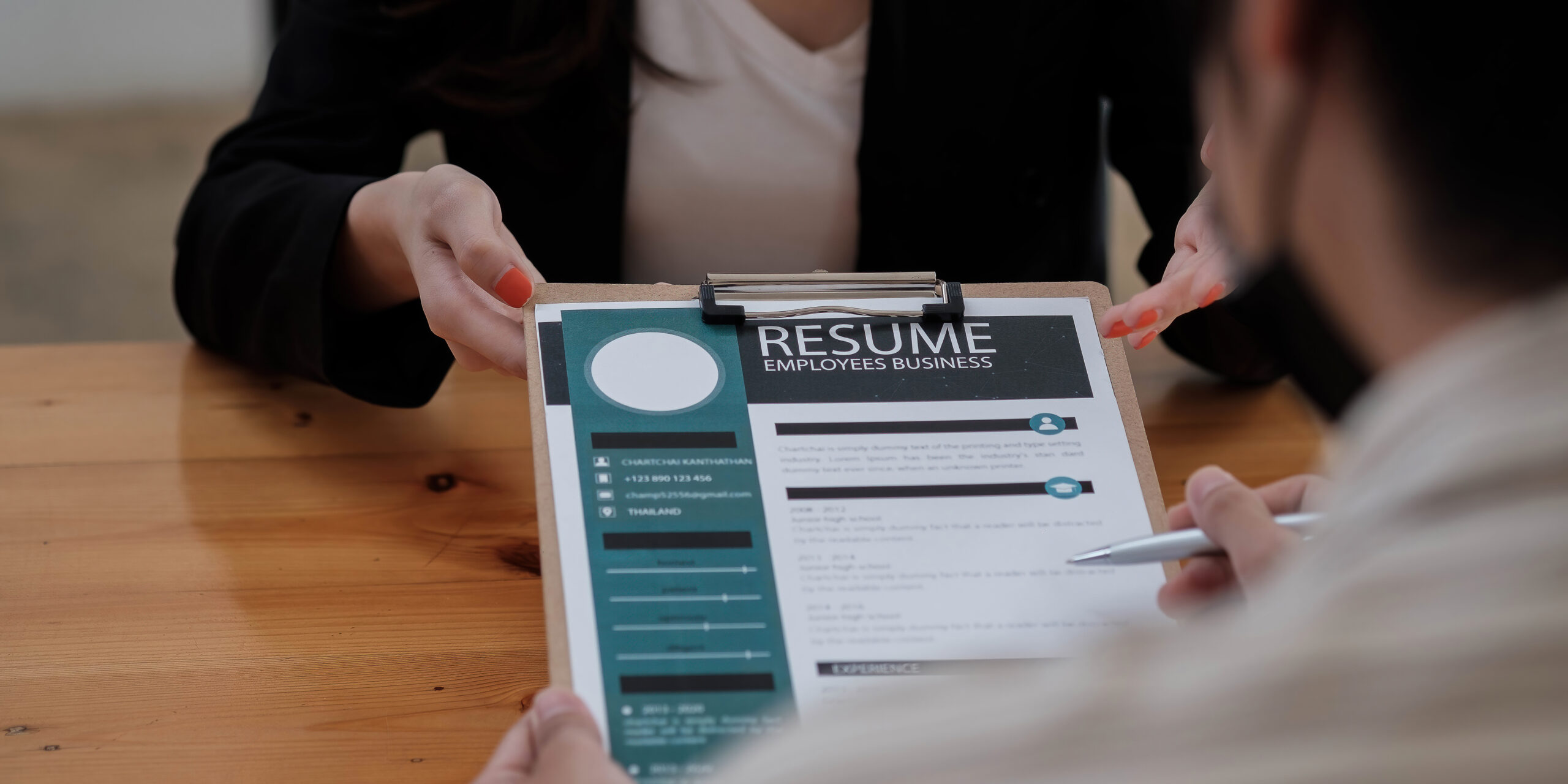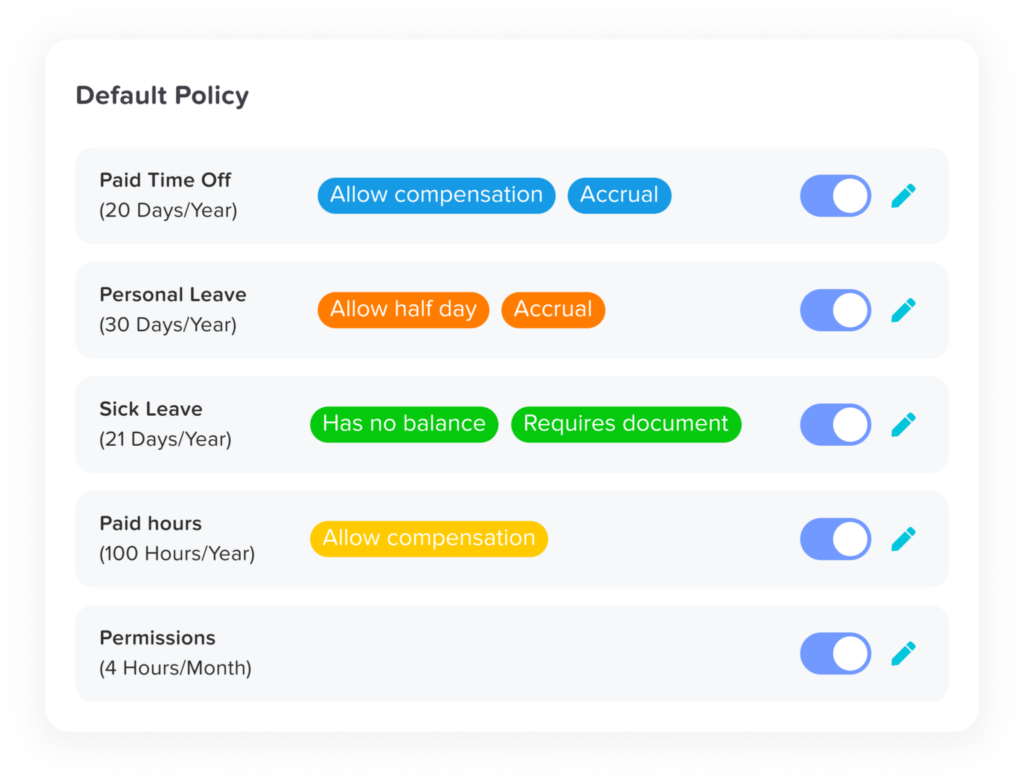Managing employee holidays and leave requests can be a complex task, especially for businesses with large teams or multiple locations. Holiday management tools simplify this process by providing automated leave tracking, real-time scheduling, compliance support, and seamless integration with HR systems. These tools ensure that workflows remain uninterrupted, employees get the time off they need, and businesses can maintain productivity without scheduling conflicts.
This article explores everything you need to know about holiday management tools, including their key features, benefits, challenges, and the best solutions available. Whether you’re a small business or a large enterprise, the right holiday management tool can streamline your HR operations and enhance employee satisfaction.
1. What Are Holiday Management Tools?
Definition
A holiday management tool is a software solution that automates and streamlines the process of managing employee leave, vacation requests, and holiday schedules. These tools provide an easy-to-use interface for employees to request time off, managers to approve or deny requests, and HR teams to track leave balances, ensure compliance, and maintain workforce efficiency.
Who Needs Holiday Management Tools?
Holiday management tools are essential for:
- Small & Medium Businesses (SMBs): Simplifying time-off tracking without HR complexity.
- Large Enterprises: Managing leave policies across multiple teams and locations.
- Remote & Hybrid Teams: Ensuring smooth scheduling across different time zones.
- HR & Payroll Teams: Automating compliance and payroll calculations.
Day Off: For Employees Holiday Management
Day Off is a comprehensive leave management solution designed to streamline the process of tracking employee vacations, paid time off (PTO), and absences. Catering to businesses of all sizes, it offers both web-based and mobile applications, ensuring that managing time-off requests is both efficient and user-friendly.
Smart Vacation Tracking & Real-Time Leave Management:
Keep track of all types of employee leave, including vacation days, sick leave, unpaid time off, and special absences, with a real-time vacation tracker, automated tracking system. Employees can easily check their remaining leave balance, while HR teams and managers maintain accurate, up-to-date records without manual intervention. The system helps prevent errors and ensures that time-off requests are managed smoothly without impacting business operations.
Customizable Approval Workflows for a Seamless Request Process:
Tailor leave approval workflows to fit your company’s organizational hierarchy and internal policies. Whether you need single-step approvals or multi-level authorization, the system allows for custom configurations to align with business requirements. Managers can approve or decline requests instantly, and HR teams can set predefined rules for auto-approval based on available balance, company leave quotas, or departmental needs. This helps create a fast, transparent, and fair approval process, eliminating the hassle of back-and-forth email chains.
Automated Notifications for Employees and Managers:
Improve communication and efficiency with real-time notifications and alerts. Employees receive instant updates on their leave request status, while managers get notifications about pending approvals and upcoming team absences. The system also allows companies to send company-wide holiday announcements, ensuring that all team members are informed about scheduled office closures, seasonal breaks, and other important events.
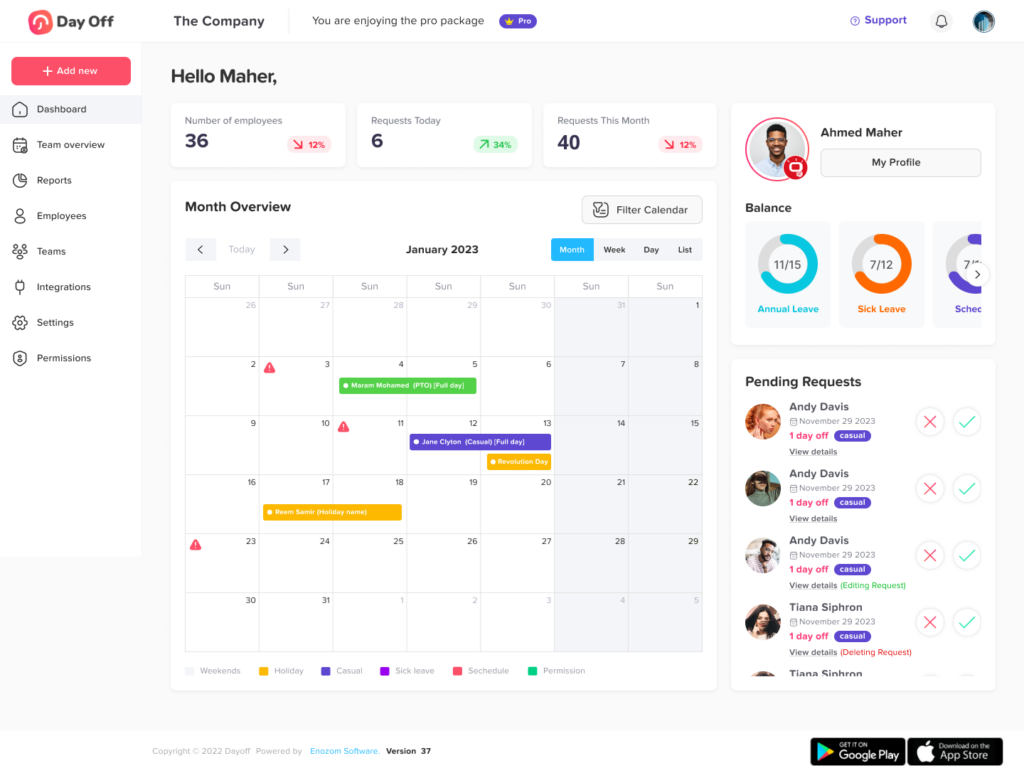
Flexible Sub-Team Management for Large or Distributed Workforces:
If your company operates across multiple departments, locations, or teams, managing time-off policies can become complex. With a sub-team management feature, businesses can organize employees into groups, each with its own set of leave policies, work schedules, accrual settings, and public holidays. This allows HR teams to create custom leave rules for different departments while maintaining centralized control over overall workforce availability.
Comprehensive Reporting, Analytics & Workforce Insights:
Gain valuable data-driven insights into leave trends, absenteeism, and workforce availability with detailed reports and analytics dashboards. Managers and HR teams can access custom reports that show patterns in employee time-off usage, helping them make data-backed workforce planning decisions. Identify peak holiday seasons, track unused leave balances, and analyze absence trends to ensure smooth operations and prevent understaffing issues. These reports can also be exported for payroll processing, compliance audits, and HR reviews.
Seamless Mobile Access for On-the-Go Management:
Stay connected and in control from anywhere with intuitive mobile apps available on Google Play and the App Store. Employees can submit leave requests, check balances, and receive real-time notifications right from their smartphones, while managers can approve or reject requests instantly, ensuring quick decision-making. Whether working remotely, traveling, or on-site, employees and HR teams can efficiently manage time-off requests without being tied to their desktops. The mobile-friendly experience ensures convenience, flexibility, and efficiency for businesses of all sizes.
Benefits of Using a Holiday Management Tool
A holiday management tool enhances efficiency, transparency, and compliance in handling employee leave. It not only simplifies administrative tasks but also helps businesses optimize scheduling, improve workforce planning, and boost employee satisfaction.
Saves Time and Eliminates Manual Work
Managing leave manually through spreadsheets, emails, or paper-based records is time-consuming and prone to errors. A holiday management tool automates the entire process, allowing employees to request leave in just a few clicks, while managers and HR teams can approve, track, and manage absences instantly. This reduces administrative workload, minimizes errors, and ensures that records are always up to date.
Prevents Scheduling Conflicts and Workforce Disruptions
Unplanned absences or overlapping leave requests can disrupt workflows and cause staff shortages. A holiday management tool provides a real-time leave calendar, enabling managers to see who is available before approving requests. By maintaining adequate staff coverage, businesses can avoid productivity gaps, ensure smooth operations, and prevent last-minute scheduling conflicts.
Boosts Employee Satisfaction and Work-Life Balance
A transparent and efficient leave management system allows employees to plan their time off with confidence. With clear visibility into their leave balances and approval status, employees experience less frustration and uncertainty. This improves morale, promotes a healthy work-life balance, and fosters a positive workplace culture where employees feel valued and respected.
Ensures Compliance with Company Policies and Labor Laws
Different industries and regions have specific labor laws governing employee leave entitlements. A holiday management tool automatically applies company policies and legal regulations, ensuring that all leave requests are processed fairly and in compliance with local labor laws. This reduces the risk of non-compliance penalties, legal disputes, and inconsistencies in leave approvals.
Enhances Workforce Planning and Productivity
HR teams and managers need real-time insights into employee leave trends to optimize workforce allocation and project planning. A holiday management tool provides detailed reports and analytics on employee absences, seasonal leave patterns, and department-wide availability, helping businesses plan, distribute workloads efficiently, and maintain productivity without disruptions.
Reduces Payroll Errors and Simplifies Salary Processing
Incorrect leave tracking can lead to payroll miscalculations, causing underpayments, overpayments, or employee disputes. A holiday management tool integrates seamlessly with payroll systems, ensuring that leave balances, deductions, and entitlements are accurately reflected in salary calculations. This reduces manual payroll adjustments, prevents financial discrepancies, and guarantees that employees receive the correct pay based on their leave status.
Best Holiday Management Tools in 2026
Choosing the right holiday management tool depends on your business size, workforce structure, and specific HR needs. Below is a list of the top solutions, including their strengths and weaknesses, to help you make an informed decision.
BambooHR
Best for: Small and medium-sized businesses (SMBs)
Key Features:
Automated leave tracking with employee self-service.
Integrated HR analytics for better workforce planning.
Seamless integration with payroll and time tracking systems.
Cons:
Limited customization options for leave policies.
Not ideal for complex, multi-location businesses.
Higher pricing compared to some SMB-focused alternatives.
Zoho People
Best for: Businesses needing multi-location support
Key Features:
AI-powered leave tracking with automated approvals.
Advanced workforce management features for remote and hybrid teams.
Scalable for growing companies with multiple locations.
Cons:
Initial setup can be complex and time-consuming.
Some advanced features are only available in higher-tier plans.
Customer support response times can be slow.
Timetastic
Best for: Startups and freelancers
Key Features:
Simple calendar-based leave tracking.
User-friendly interface with minimal learning curve.
Integrates easily with Slack, Microsoft Teams, and Google Calendar.
Cons:
Lacks advanced HR features like payroll integration and compliance tracking.
Not suitable for large teams with complex approval workflows.
Limited reporting and analytics capabilities.
Workday
Best for: Large enterprises needing comprehensive HR solutions
Key Features:
Enterprise-grade HR and leave management.
Advanced compliance and regulatory reporting features.
Suitable for multi-location and multinational corporations.
Cons:
Expensive and requires a long implementation process.
Steep learning curve for new users.
Overkill for small and mid-sized businesses that need only basic leave tracking.
Factorial HR
Best for: Fast-growing businesses
Key Features:
Customizable leave policies to fit different industries.
User-friendly, mobile-friendly interface for on-the-go management.
Affordable pricing compared to enterprise-grade solutions.
Cons:
Limited third-party integrations compared to competitors.
Some reports and analytics features are less detailed.
Customer support can be slow during peak times.
Frequently Asked Questions (FAQ) About Holiday Management Tools
What is a holiday management tool, and why is it important?
A holiday management tool is software that automates and simplifies the process of managing employee leave requests, vacation schedules, and public holidays. Instead of relying on spreadsheets, email threads, or manual approvals, these tools centralize all leave-related activities in one system.
They are important because they help businesses:
Prevent overlapping time-off requests and scheduling conflicts.
Save time by automating leave tracking and approvals.
Maintain compliance with company policies and local labor laws.
Improve transparency and employee satisfaction.
Essentially, a holiday management tool ensures smooth operations, even when multiple employees are on leave.
Who can benefit from using a holiday management tool?
Holiday management tools are beneficial for businesses of all sizes and industries, including:
Small and medium-sized businesses (SMBs) that want to eliminate manual leave tracking without hiring a full HR department.
Large enterprises managing multiple teams, departments, or global locations.
Remote or hybrid teams needing coordination across time zones.
HR and payroll departments aiming to automate compliance and reduce administrative work.
Whether your business has 10 or 10,000 employees, a holiday management tool scales to match your organizational needs.
How does a holiday management tool work?
A typical holiday management tool allows employees to:
Submit leave requests digitally (via web or mobile app).
View available leave balances in real time.
Receive instant updates on approvals or denials.
For managers and HR teams, the tool provides:
A central dashboard to review and approve requests.
Custom approval workflows to match company hierarchy.
Real-time visibility into team availability and scheduling.
Automated notifications to avoid communication delays.
Reports and analytics to monitor trends and optimize staffing.
This automation minimizes manual effort and keeps leave management consistent, fair, and transparent.
Can holiday management tools integrate with payroll and HR systems?
Yes — most modern holiday management platforms are designed to integrate seamlessly with HR and payroll systems. This ensures that employee absences automatically reflect in payroll calculations, reducing the risk of overpayment, underpayment, or compliance errors.
Integrations also enable smoother data flow between departments, ensuring that HR, payroll, and management teams always work with accurate, up-to-date information.
What features should I look for in a good holiday management tool?
The best holiday management software should include:
Smart leave tracking with real-time updates.
Customizable approval workflows to match your organizational structure.
Automated notifications and alerts for employees and managers.
Sub-team or departmental management for large or distributed teams.
Comprehensive analytics and reporting for better decision-making.
Mobile accessibility for on-the-go management.
Integration capabilities with payroll, HR, and communication platforms (like Slack or Teams).
Choosing a tool that fits your specific workflow ensures a smoother implementation and better adoption by your team.
How can a holiday management tool improve employee satisfaction?
Transparency and convenience are key drivers of employee satisfaction. With a digital holiday management system, employees can:
Check their leave balance anytime.
Submit requests without lengthy email chains.
Get instant notifications about approval or denial.
Plan vacations confidently without worrying about miscommunication.
When leave policies are clear and processes are automated, employees feel more trusted, valued, and empowered, resulting in higher morale and lower burnout.
How does a holiday management tool prevent scheduling conflicts?
A holiday management tool includes a shared leave calendar that shows who’s off and when. This allows managers to see team availability before approving new requests, preventing overlapping absences or staff shortages.
Some systems even use AI-based recommendations to help managers identify the best times for approving or denying requests, ensuring adequate coverage during busy periods.
Can holiday management tools handle different leave policies for different departments or countries?
Yes. Advanced tools like Day Off or Zoho People allow you to create custom leave policies for different teams, departments, or locations. You can define:
Local public holidays.
Department-specific accrual rates.
Approval hierarchies and blackout periods.
This flexibility ensures that multinational or multi-department organizations remain compliant with regional laws while maintaining centralized control.
Are holiday management tools compliant with labor laws?
Most modern tools are built with labor law compliance in mind. They can automatically enforce rules regarding:
Minimum leave entitlements.
Carryover limits.
Paid vs. unpaid leave types.
Regional public holidays.
Some systems also generate audit-ready reports for compliance checks and legal verification, helping companies stay protected from potential disputes or penalties.
How secure are holiday management tools?
Security is a top priority for any HR-related software. Reputable providers use:
End-to-end encryption for sensitive employee data.
Role-based access control to restrict data visibility.
GDPR and SOC 2 compliance for data protection and privacy.
Regular security audits and backups to prevent data loss.
Before choosing a solution, always confirm the vendor’s data security and compliance standards.
How do mobile apps improve holiday management?
Mobile functionality allows employees and managers to handle leave requests anytime, anywhere. Through dedicated apps (like those offered by Day Off), users can:
Submit or approve requests on the go.
View real-time team calendars.
Receive instant push notifications.
Access their leave history easily.
For remote or hybrid teams, mobile apps ensure uninterrupted communication and fast decision-making, without depending on desktops or office access.
What are the most common mistakes companies make when managing holidays manually?
Manual leave management often leads to:
Overlapping or conflicting schedules.
Lost or incomplete leave records.
Payroll miscalculations due to inaccurate data.
Lack of visibility into workforce availability.
Poor employee morale from delayed approvals or unfair denials.
Automating leave management through a reliable tool eliminates these issues by creating a centralized, transparent, and error-free system.
How can businesses choose the right holiday management tool?
When evaluating holiday management tools, consider:
Company size and structure: Do you need a simple tracker or a full HR suite?
Ease of use: Can employees and managers use it without extensive training?
Integration capabilities: Does it connect with your payroll and HR systems?
Customization: Can it handle unique policies for different teams or regions?
Budget: Is it cost-effective for your business size?
For small and mid-sized teams, tools like Day Off provide an affordable, intuitive option. Larger enterprises might benefit more from full-scale HR platforms like BambooHR or Workday.
How do holiday management tools support remote or hybrid teams?
Remote and hybrid workplaces rely heavily on digital coordination. A cloud-based holiday management system helps these teams:
Track leave requests across time zones.
Keep managers informed about employee availability.
Ensure fairness and consistency, regardless of location.
Integrate with collaboration tools like Slack, Teams, or Google Workspace.
This level of visibility prevents miscommunication and helps distributed teams stay synchronized.
What ROI can businesses expect from using a holiday management tool?
Investing in a holiday management system can deliver measurable returns, including:
50–70% reduction in administrative workload.
Fewer payroll errors, saving both time and money.
Improved employee engagement through transparency and flexibility.
Better workforce planning, reducing costly disruptions.
In short, automation doesn’t just save time, it creates a more efficient, compliant, and motivated workplace.
Conclusion
Effective holiday management is essential for maintaining productivity, employee satisfaction, and compliance within any organization. Holiday management tools streamline the process by automating leave tracking, approvals, scheduling, and workforce planning, ensuring that businesses can prevent scheduling conflicts, reduce administrative workload, and eliminate payroll errors.
By adopting a holiday management system, companies can save time, improve compliance, boost employee morale, and create a structured approach to leave management. In today’s fast-paced work environment, having an efficient system in place is no longer a luxury, it’s a necessity.



